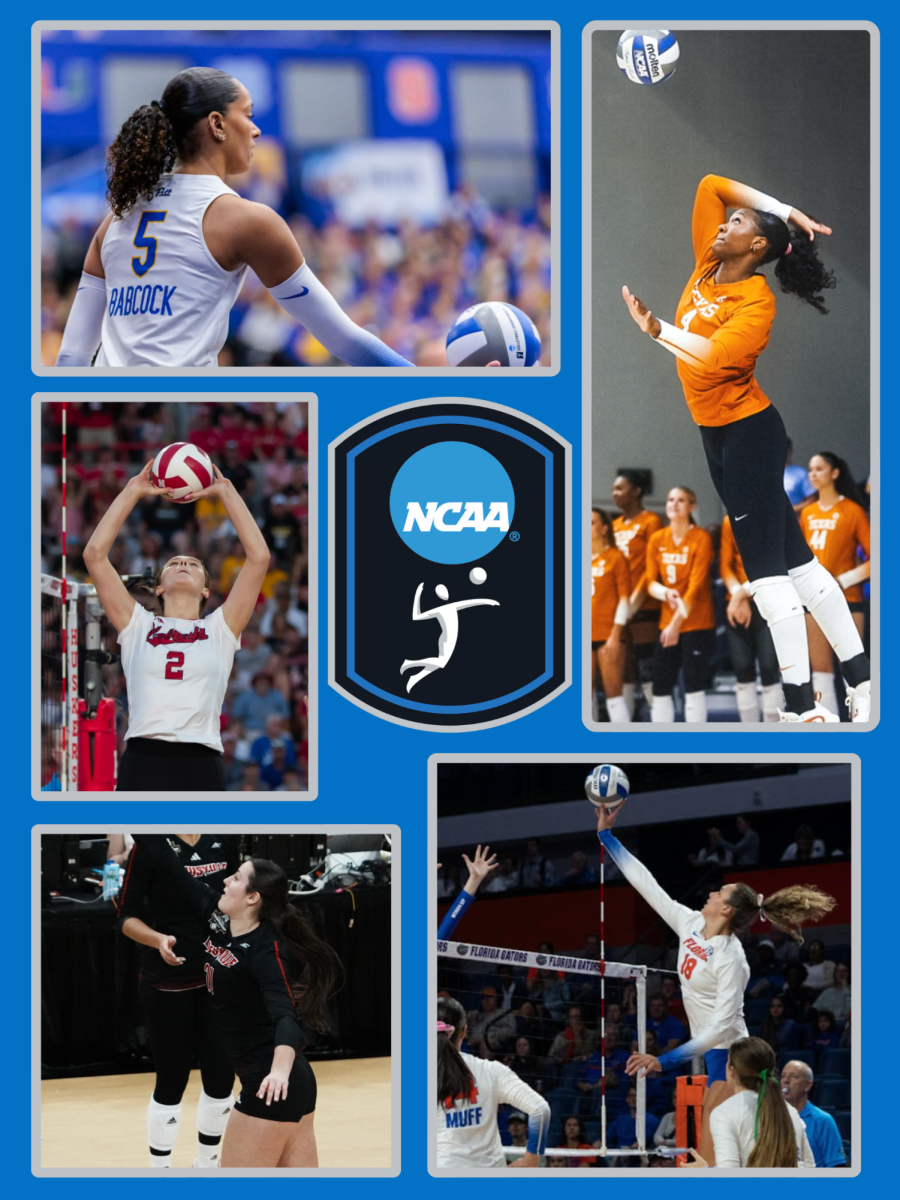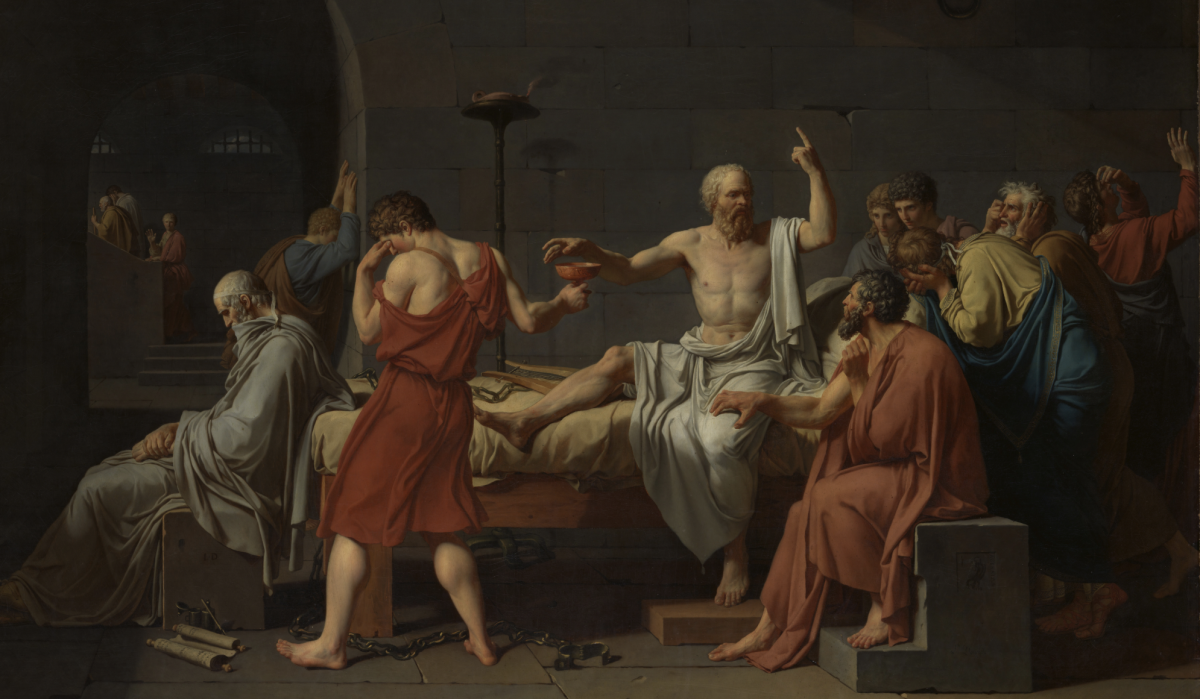
Entering into the colder time of the year requires safety and protection from frostbite and the winter bug going around, so bundling up is crucial because unfortunately, Nebraska’s weather is highly known for being unpredictable all year round. That being said, we can get hit with almost every natural disaster possible, despite hurricanes and tsunamis, however, that doesn’t mean the changing seasons do require welfare during this interval of the year. Walking a campus in a private high school with two separate buildings does require some walking outside, even in freezing conditions later on. As temperatures drop, winter looms closer which makes it twice as important for students to prepare themselves for Nebraska’s unpredictable weather, especially in a high school environment with a partially outdoor campus, providing unique discomfort going from building to building. But what if dressing warm in the cold could come at some cost? Unfortunately, school policy prohibits certain pieces of clothing that could be crucial during this time of year.
As winter approaches, the once-gentle fall breeze is going to start biting quicker than we know it, with temperatures dropping like flies. The familiar signs of seasonal change are unmistakable and the chill only serves as a reminder for the students that the days of quick walks between warm buildings are numbered. Many of the students here are preparing to bundle up for these next few months whilst walking from building to building, which I believe is one of the downsides to our beautiful campus. In the spring and summer, walking through the Brownell Talbot campus is almost eye candy, especially for an artist all thanks to how prestigious the layout of the building is set and the landscaping is always in tip-top shape, however, in the colder seasons, being a student here requires a sacrifice of cherishing the warm indoor heating, to walking outside in the frigid air to the next class.
It has been a stigma among students and faculty for some time now and during the winter, some students have attempted to protest against this rule, some have gotten away and some haven’t, however, restricting students to wearing what helps them feel warm in the winter is absurd in my opinion. I just overheard two teachers earlier this week talking over what a student had been wearing at lunch, and one student was wearing a Brownell Talbot Cheer windbreaker, that moment I found out that wearing jackets of any sort wasn’t allowed, which caught me by surprise. Partially, I was frustrated even though I wasn’t even the student getting called out for wearing a jacket. Still, I felt sympathy because I’m the type of person who if I’m a certain temperature, my day feels dilapidated. That might also be because 47.78-65.68% of East Asians were found to have a cold hypersensitivity, but that can also be found in many other ethnicities, not only Eastern Asians, and mostly in the genetics of people. It’s common to feel and being highly sensitive to the cold is a heavily unpleasant feeling, especially having to walk from building to building from day to day.
Many feel that the strictly enforced dress code is unfair to these students, in a way where if they feel physically uncomfortable with the weather conditions, it’s against school policy to provide comfort and warmth. They do allow girls to wear leggings under their skirts, but that’s about the most the school will allow in correlation to non-Brownell Talbot everyday wear that aren’t skirts, polos, or school-approved sweaters. In the past girls would try to wear sweatpants under their uniform skirts to provide a thicker layer of protection from the cold, however, it supposedly isn’t approved in the student handbook of approved items you can wear to school and just as of recently, blankets have been prohibited during school hours. Blankets have been popular in previous years to provide warmth in class, but at the beginning of the 2024 school year, the administration claimed that “Blankets shall not be worn,” which is a statement that I can strongly argue against, and if I were to ask a question, it would be, why only this year? Teachers have preferred blankets not to be used in class, but that rule in particular was enforced greater in comparison to last year, and in my opinion, blankets in class have never been a problem with students, and if girls aren’t allowed to stay warm by wearing plain, grey sweatpants to stay warm, bringing around a small, thin blanket to stay warm shouldn’t be a concern either. Another issue that was

faced was about ‘jackets’ inside. The student who was wearing the windbreaker was told that jackets are supposed to stay in lockers and lockers only, which I find useless in the sense that, yes, we wear the jacket to school, but we learn on a campus that requires us to step outside as well during the day just to get from class to class, and I find that rule in particular absurd. Full disclosure, I have gotten away with wearing my mom’s recess coat in some classes, however, if I were told that I couldn’t wear a jacket inside to stay warm, I would take that thought to administration because sometimes only wearing a sweater or a hoodie just isn’t enough.
Depicted is a screenshot of a section from the Brownell Talbot student uniform handbook regarding dress code, specifically, outerwear, as the title says. Heavy coats and jackets are said to be removed with no exception according to the short description on that topic, and they include, “no jackets in the dining hall,” implying during lunch in the cafeteria, coats, and jackets are not permitted, even when it is below freezing. There are doors connected to the dining hall and students, faculty, and staff constantly go in and out of the building. The administration has mentioned, “If students feel the need to wear a jacket inside, then they need to toughen up,” claims one of the faculty at lunch. My opinion on the jacket area of this dress code policy may be far-fetched even though wearing jackets and coats inside isn’t something I normally do, however, I truthfully do believe that ruling out all the rules in the student dress guide/handbook is outrageously ridiculous not allowing students to wear jackets and/or coats inside the building, and I could easily same the same thing to a faculty member, and the response I would get back may not be as respectful compared to if I received a reminder. However, I have noticed a new rule that other students and I have greatly appreciated, which is allowing students to wear any plain navy blue or grey sweater as long as it has no logo or print on the front or back I feel that during this cold time of year, it is a great way to allow students more warmth enabling them to have the freedom of going out and buy a sweater that is plain grey or navy of their choice, being the right amount of thickness they desire to stay warm.
However, I would still like the school to look into the same idea as they did sweaters/hoodies: sweatpants. Sweatpants have been very controversial, and in my opinion, if students can wear any sweater that is plain navy or grey, then why can’t the rule be altered so sweatpants are part of the picture? Sweatpants have been one of the most critical arguments that have circulated between students and administration and it’s one of the prohibited pieces of clothing administration despises to see students wear. Maybe it’s the fact they’re baggy or maybe it’s because students can wear sweatpants of absurd colors, but either way, I believe being able to wear sweatpants should be permitted between November and February, the coldest four months of the year at the least. For women, leggings are permitted under uniform skirts, but what if that’s not enough? I’ve thought over the motive as to why this is a rule, and my initial thought is mainly the reasoning of, ‘it doesn’t look uniform.’ I believe if students are permitted to wear either plain grey sweatpants or navy blue sweatpants, it shouldn’t be as big of an issue as the administrators sought it to be.
Lastly, an unrelated issue corresponding to the topic that has to do with the dress code is skirts.

This is an issue completely unrelated to the winter another issue others have faced regarding the dress code is the length of our skirts and what “an appropriate length” is for these skirts, and this reminder gets alluded to teenage girls specifically, and these remarks are mostly towards the girls who have a slimmer, taller build, giving them the illusion of their skirt appearing shorter than it is in reality. However, the enforcement of skirt length often is viewed as target or disproportionate amongst students affecting a specific subset of students rather than being applied equitably. While the intention of these constant comments may stem from a desire to maintain professionalism, its execution sometimes borders on body-shaming, disproportionately impacting taller or slimmer students whose proportions naturally alter the way clothing fits. This not only fosters an atmosphere of discomfort and unfair scrutiny but also diverts attention from more pressing matters within the school community, leaving many students feeling judged and unfairly singled out.
Ultimately, the dress code handbook is put in place for justifiable reasons to protect the students and provide a student body that appears put together and uniform, as a prestigious school should appear to the public eye, however perspective from the student body themselves, as well as myself, strongly agree with some of the strict protocols the student handbook requires including outerwear, pants, and skirt length. Listed are just a few of the issues the student body at Brownell Talbot disagrees with, despite that, the school has finally allowed students to be able to wear a plain sweater that is navy blue or grey even though students have worn outerwear similar to that in previous years when it wasn’t permitted or listed in the handbook. Hearing that the school finally allowed that type of clothing, was relieving hearing the school is starting to move forward in correlation to the dress code, allowing the students to express themselves through their clothes while staying in uniform. Students truly do highly appreciate the administration considering their voices throughout the years, and grateful for the changes the student body has fought for in the future, further paving the future of the uniform look and the school.





















